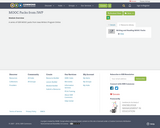
A series of OER MOOC packs from Iowa Writers Program Online
- Subject:
- English Language Arts
- Material Type:
- Module
- Author:
- Ellen Feig
- Date Added:
- 03/01/2017

A series of OER MOOC packs from Iowa Writers Program Online

Hilfestellungen zur Bedienung der MS Office-Programme sind meist nicht barrierefrei. Und die meisten Inhalte zur Barrierefreiheit richten sich an offensichtlich nicht eingeschränkte Anwender, die für Betroffene arbeiten.
Frei verfügbarere, barrierefreie Inhalte für Betroffene sind bisher nur in fragmentierter oder nicht mehr aktueller Form verfügbar gewesen.
Es fehlte bisher ein barrierefreier, aktueller und ausführlicher Leitfaden für das Programm.
Dieses Werk richtet sich an Menschen, die die Maus nicht bedienen können (in erster Linie blinde und sehbehinderte Menschen), und gibt ihnen einen soliden Einstieg in MS Excel und die wichtigsten Features des Programms.
Der Leitfaden folgt teilweise dem praktischen Beispiel einer einfach gehaltenen Korpusanalyse.
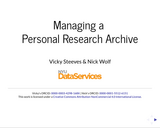
A class on setting up and managing research materials; caring for digital files to enable collaboration, sharing, and re-use; and helpful software/digital tools for organizing personal research files.
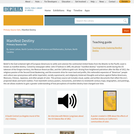
This collection uses primary sources to explore the idea of Manifest Destiny and its influence. Digital Public Library of America Primary Source Sets are designed to help students develop their critical thinking skills and draw diverse material from libraries, archives, and museums across the United States. Each set includes an overview, ten to fifteen primary sources, links to related resources, and a teaching guide. These sets were created and reviewed by the teachers on the DPLA's Education Advisory Committee.

Expectations by funders for transparent and reproducible methods are on the rise. This session covers expectations for preregistration, data sharing, and open access results of three key funders of education research including the Institute of Education Sciences, the National Science Foundation, and Arnold Ventures. Presenters cover practical resources for meeting these requirements such as the Registry for Efficacy and Effectiveness Studies (REES), the Open Science Framework (OSF), and EdArXiv. Presenters: Jessaca Spybrook, Western Michigan University Bryan Cook, University of Virginia David Mellor, Center for Open Science
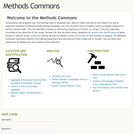
Computation has produced new and exciting ways of studying texts. Many of these methods do not require the use of expensive programs or detailed programming knowledge, but only the know-how to combine freely accessible resources to perform various tasks. This site describes common or interesting sequences of actions, or recipes. They are organized according to the objective of the recipe. Recipes fall into the three major categories of location and identification of ideas, themes or specific terms; analysis of textual devices or themes; or the construction of new entities or corpora. The Methods Commons community benefits from shared experience and learning how others make use of recipes. You can share your experience by adding your own recipes to the collection. More information about recipe and exercise structure and authoring is available on the Recipe Structure page. We also have a Glossary that we hope you will add to.

This course provides an introduction to public policy analysis. It is designed for students who may be planning a career in public or non-profit sectors. The primary goal is to help students understand the implications of public policy for different pursuits. The class examines various approaches to policy analysis by considering the concepts, tools, and methods used in economics, political science, and other disciplines. Students apply and critique these approaches through case studies of current public policy problems.
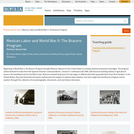
This collection uses primary sources to explore the Bracero Program. Digital Public Library of America Primary Source Sets are designed to help students develop their critical thinking skills and draw diverse material from libraries, archives, and museums across the United States. Each set includes an overview, ten to fifteen primary sources, links to related resources, and a teaching guide. These sets were created and reviewed by the teachers on the DPLA's Education Advisory Committee.
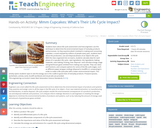
Students learn about life-cycle assessment and how engineers use this technique to determine the environmental impact of everyday products and processes. As they examine what’s involved in making and consuming cupcakes, a snack enjoyed by millions of people every year, students learn about the production, use and disposal phases of an object’s life cycle. With the class organized into six teams, students calculate data for each phase of a cupcake’s life cycle—wet ingredients, dry ingredients, baking materials, oven baking, frosting, liner disposal—and calculate energy usage and greenhouse gases emitted from making one cupcake. They use ratios and fractions, and compare options for some of the life-cycle stages, such as different paper wrapper endings (disposal to landfills or composting) in order to make a life-cycle plan with a lower environmental impact. This activity opens students’ eyes to see the energy use in the cradle-to-grave lives of everyday products. Pre/post-quizzes, worksheets, activity cards, Excel® workbook and visual aids are provided.

This course is the first of a two term sequence in modeling, analysis and control of dynamic systems. The various topics covered are as follows: mechanical translation, uniaxial rotation, electrical circuits and their coupling via levers, gears and electro-mechanical devices, analytical and computational solution of linear differential equations, state-determined systems, Laplace transforms, transfer functions, frequency response, Bode plots, vibrations, modal analysis, open- and closed-loop control, instability, time-domain controller design, and introduction to frequency-domain control design techniques. Case studies of engineering applications are also covered.

This course explores the theory and practice of scientific modeling in the context of auditory and speech biophysics. Based on seminar-style discussions of the research literature, the class draws on examples from hearing and speech, and explores general, meta-theoretical issues that transcend the particular subject matter. Examples include: What is a model? What is the process of model building? What are the different approaches to modeling? What is the relationship between theory and experiment? How are models tested? What constitutes a good model?
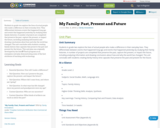
Students in grade two explore the lives of actual people who make a difference in their everyday lives. They differentiate between events that happened long ago and events that happened yesterday by studying their family histories. A number of projects are completed that preserve the past, capture the present, or impact the future, including analyzing information and drawing conclusions about how and why the world has changed. The unit concludes with students creating family history time capsules that preserve the past and present for the future.
This unit plan was originally developed by the Intel® Teach program as an exemplary unit plan demonstrating some of the best attributes of teaching with technology.
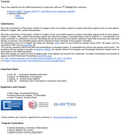
This is the material from the UIMA tutorial held in conjunction with the 3rd UIMA@GCSL workshop.
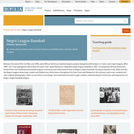
This collection uses primary sources to explore Negro League Baseball. Digital Public Library of America Primary Source Sets are designed to help students develop their critical thinking skills and draw diverse material from libraries, archives, and museums across the United States. Each set includes an overview, ten to fifteen primary sources, links to related resources, and a teaching guide. These sets were created and reviewed by the teachers on the DPLA's Education Advisory Committee.
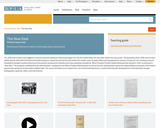
This collection uses primary sources to explore the New Deal. Digital Public Library of America Primary Source Sets are designed to help students develop their critical thinking skills and draw diverse material from libraries, archives, and museums across the United States. Each set includes an overview, ten to fifteen primary sources, links to related resources, and a teaching guide. These sets were created and reviewed by the teachers on the DPLA's Education Advisory Committee.
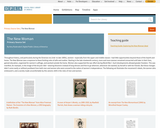
This collection uses primary sources to explore the New Woman ideal. Digital Public Library of America Primary Source Sets are designed to help students develop their critical thinking skills and draw diverse material from libraries, archives, and museums across the United States. Each set includes an overview, ten to fifteen primary sources, links to related resources, and a teaching guide. These sets were created and reviewed by the teachers on the DPLA's Education Advisory Committee.
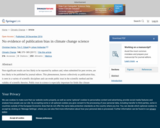
Non-significant results are less likely to be reported by authors and, when submitted for peer review, are less likely to be published by journal editors. This phenomenon, known collectively as publication bias, is seen in a variety of scientific disciplines and can erode public trust in the scientific method and the validity of scientific theories. Public trust in science is especially important for fields like climate change science, where scientific consensus can influence state policies on a global scale, including strategies for industrial and agricultural management and development. Here, we used meta-analysis to test for biases in the statistical results of climate change articles, including 1154 experimental results from a sample of 120 articles. Funnel plots revealed no evidence of publication bias given no pattern of non-significant results being under-reported, even at low sample sizes. However, we discovered three other types of systematic bias relating to writing style, the relative prestige of journals, and the apparent rise in popularity of this field: First, the magnitude of statistical effects was significantly larger in the abstract than the main body of articles. Second, the difference in effect sizes in abstracts versus main body of articles was especially pronounced in journals with high impact factors. Finally, the number of published articles about climate change and the magnitude of effect sizes therein both increased within 2 years of the seminal report by the Intergovernmental Panel on Climate Change 2007.

This course presents micro-econometric models, including large sample theory for estimation and hypothesis testing, generalized method of moments (GMM), estimation of censored and truncated specifications, quantile regression, structural estimation, nonparametric and semiparametric estimation, treatment effects, panel data, bootstrapping, simulation methods, and Bayesian methods. The methods are illustrated with economic applications.

Beschreibung der Normal- und Extensivform
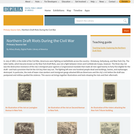
This collection uses primary sources to explore northern draft riots that occurred during the Civil War. Digital Public Library of America Primary Source Sets are designed to help students develop their critical thinking skills and draw diverse material from libraries, archives, and museums across the United States. Each set includes an overview, ten to fifteen primary sources, links to related resources, and a teaching guide. These sets were created and reviewed by the teachers on the DPLA's Education Advisory Committee.